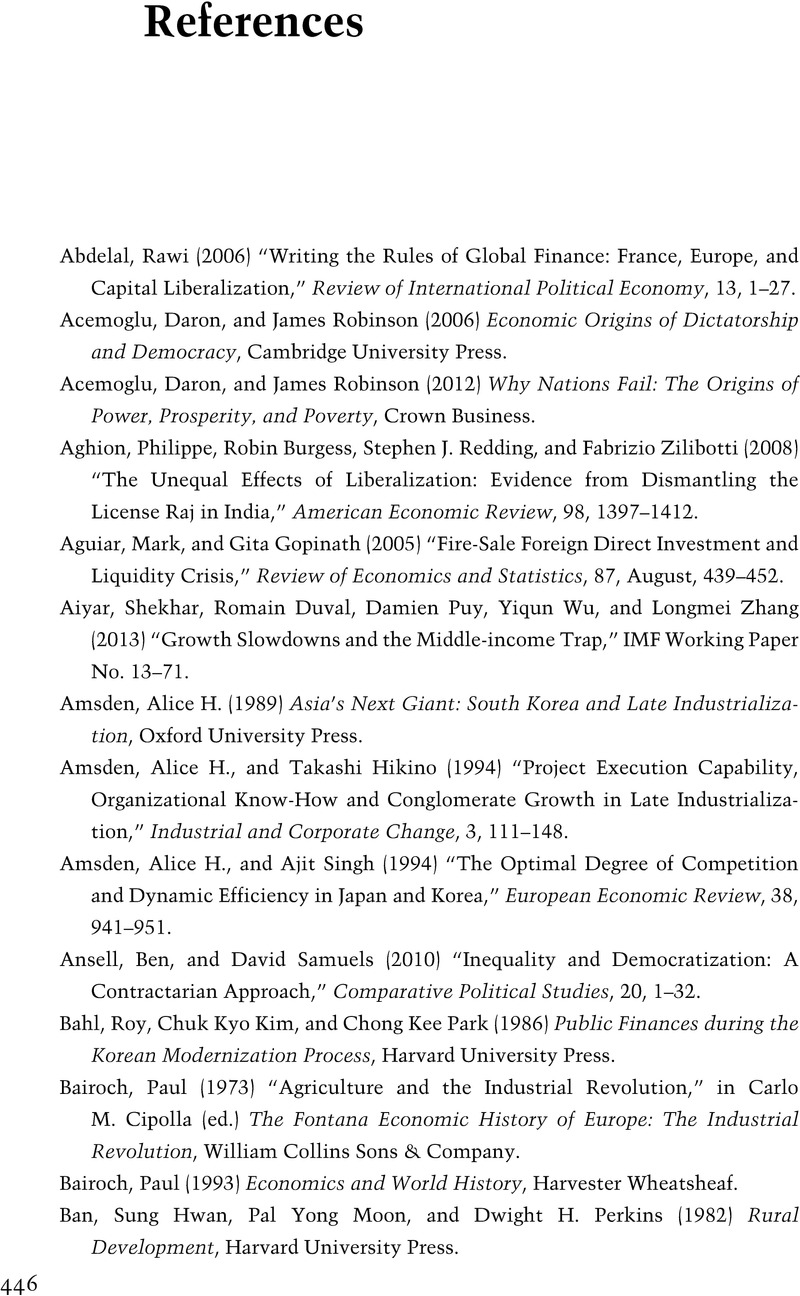Book contents
- The Tortuous Path of South Korean Economic Development
- The Tortuous Path of South Korean Economic Development
- Copyright page
- Contents
- Figures
- Tables
- Preface and Acknowledgments
- Notes on the Romanization of the Korean Language
- Abbreviations
- 1 South Korean Economic Development in Perspective
- 2 The Great Tradition That Failed
- 3 Some Lights in the Dark
- 4 Kicking Off the Miracle
- 5 Contours of the High Economic Growth
- 6 Industrial Policy and Chaebol
- 7 Growth with Equity?
- 8 Crisis and Reform
- 9 The Slowing Engine of Growth
- 10 Industrial Policy and Firms
- 11 Inequality, Jobs, and Welfare
- 12 Questions for the Future
- Appendices
- References
- Index
- References
References
Published online by Cambridge University Press: 07 December 2023
- The Tortuous Path of South Korean Economic Development
- The Tortuous Path of South Korean Economic Development
- Copyright page
- Contents
- Figures
- Tables
- Preface and Acknowledgments
- Notes on the Romanization of the Korean Language
- Abbreviations
- 1 South Korean Economic Development in Perspective
- 2 The Great Tradition That Failed
- 3 Some Lights in the Dark
- 4 Kicking Off the Miracle
- 5 Contours of the High Economic Growth
- 6 Industrial Policy and Chaebol
- 7 Growth with Equity?
- 8 Crisis and Reform
- 9 The Slowing Engine of Growth
- 10 Industrial Policy and Firms
- 11 Inequality, Jobs, and Welfare
- 12 Questions for the Future
- Appendices
- References
- Index
- References
Summary

- Type
- Chapter
- Information
- The Tortuous Path of South Korean Economic Development , pp. 446 - 464Publisher: Cambridge University PressPrint publication year: 2023

